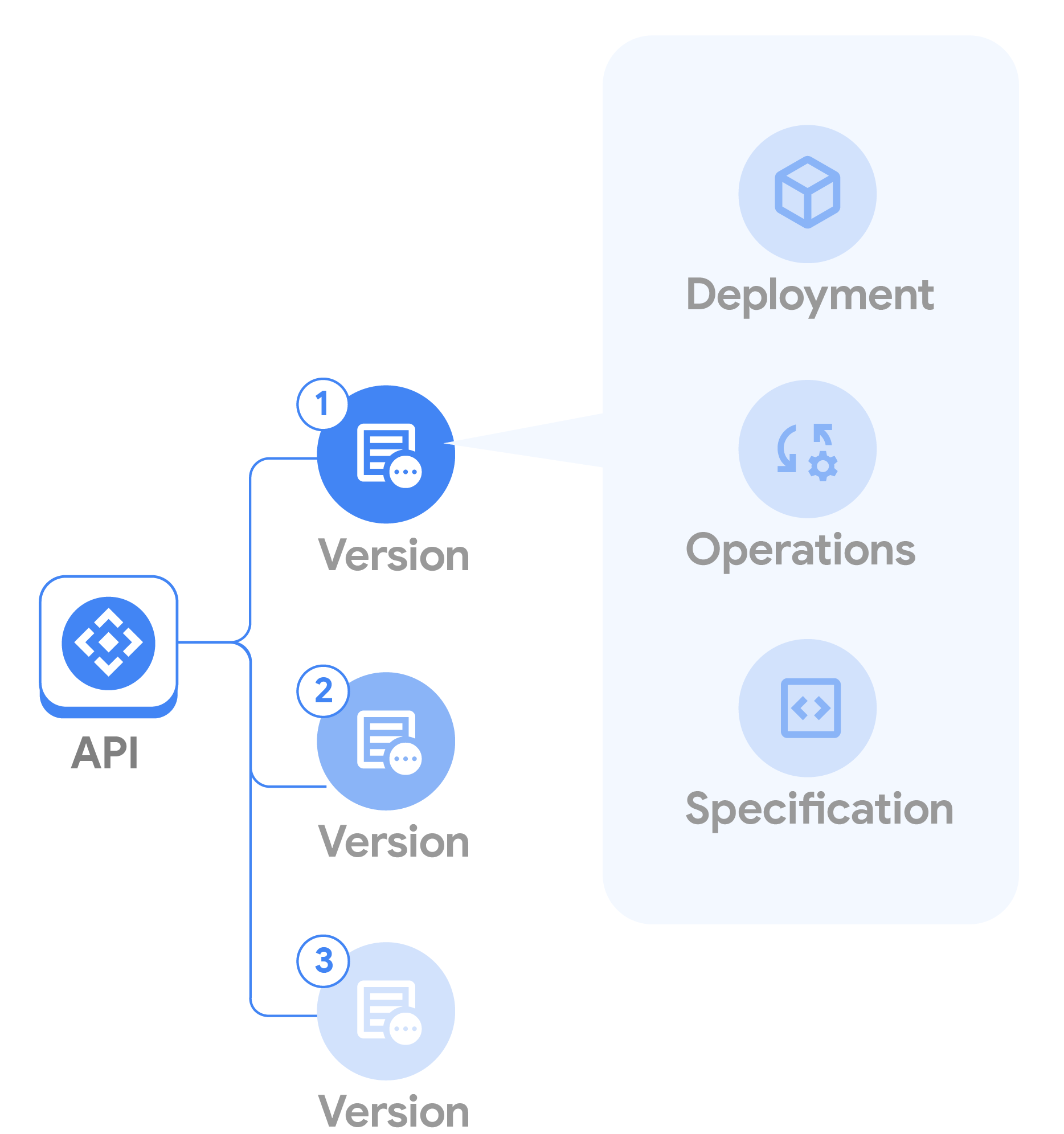Halaman ini berlaku untuk Apigee dan Apigee hybrid.
Saat mendaftarkan API ke API Hub, Anda membuat dan menyimpan entitas yang mewakili API. Kami menyebut entitas ini sebagai resource API. Resource API yang disimpan di API Hub dapat ditelusuri dan memberikan informasi operasional dan deskriptif yang mendetail tentang API.
Resource API adalah entitas kompleks yang dapat memiliki satu atau beberapa versi yang terkait. Anda dapat menganggap versi sebagai status API pada suatu waktu. Setiap versi dapat memiliki kumpulan entitasnya sendiri seperti operasi yang diuraikan dari spesifikasi API, deployment, dan spesifikasi API, seperti yang ditunjukkan pada Gambar 1.

Gambar 1. API dapat memiliki beberapa versi.
Pada saat mendaftarkan API atau setelahnya, Anda dapat menambahkan dan mengedit atribut resource API untuk membuat deskripsi lengkap API. Lihat Mengelola atribut.
API Hub mendukung atribut yang ditentukan sistem dan ditentukan pengguna. Contoh atribut yang ditentukan sistem meliputi:
- Gaya API: Atribut dengan nilai default REST, gRPC, SOAP, dan Async API.
- Pengguna target: Pengguna (konsumen) yang dituju dari API
- Tim: Tim produksi atau tim yang bertanggung jawab atas API
- Unit bisnis: Unit bisnis yang bertanggung jawab atas API
- Tingkat kematangan: Indikasi tahap siklus proses API
Terakhir, resource API dapat memiliki atribut yang ditentukan pengguna, yang Anda tentukan di Setelan berdasarkan kebutuhan organisasi atau tim Anda.

